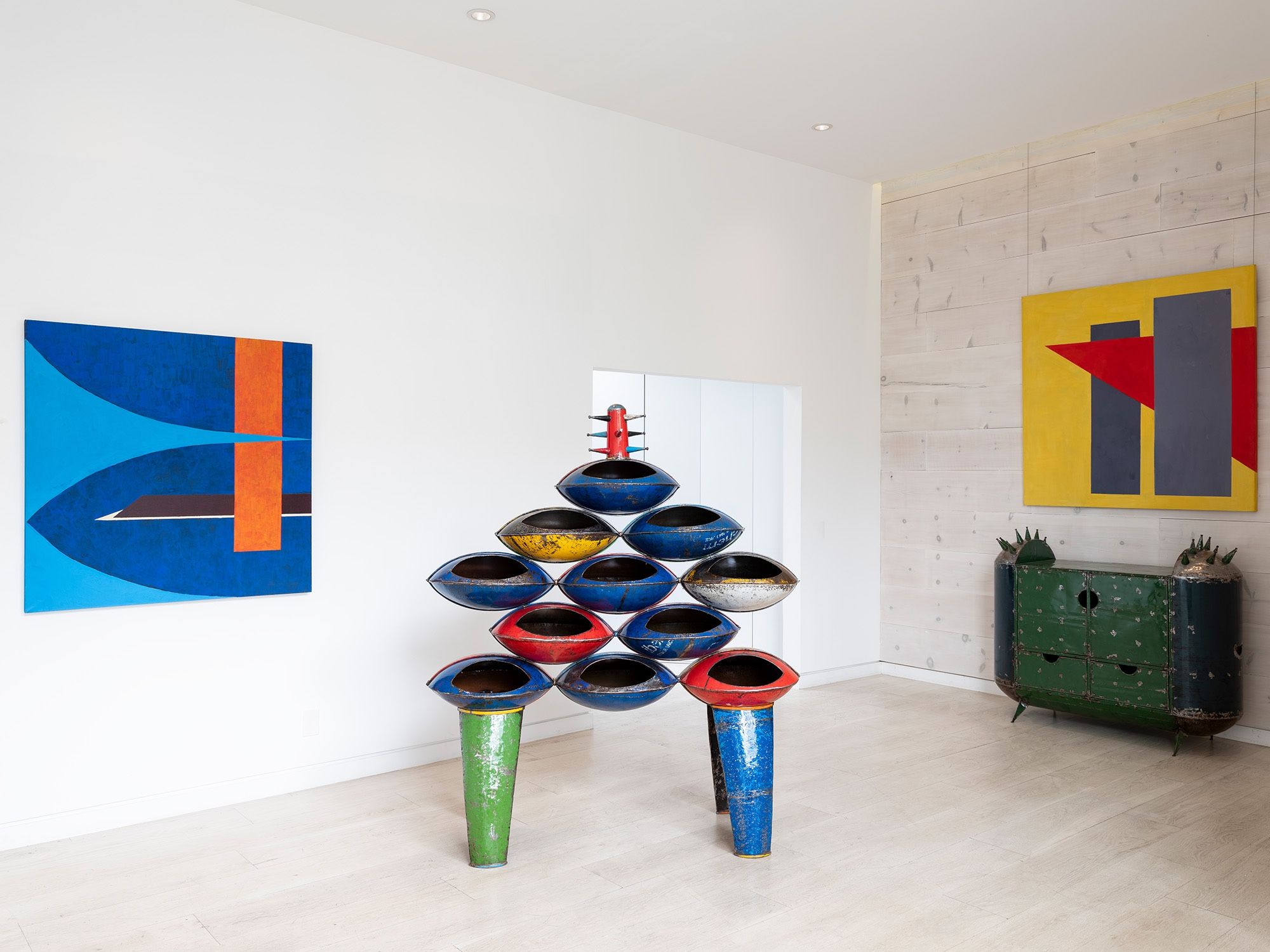IN THE MIX DECEMBER 4 2023
by Anna Carnick
Rising star Nifemi Marcus-Bello embodies the power and promise of the contemporary West African design scene.

TM BENCH FROM TALES BY MOONLIGHT, NIFEMI MARCUS-BELLO'S NEW COLLECTION DEBUTING AT DESIGN MIAMI/
Photo by Jide Ayeni; Courtesy of Marta Los Angeles and the designer
Growing up in Lagos, Nigeria in the ’90s and early 2000s, designer Nifemi Marcus-Bello found himself frequently relocating within the city as he navigated a series of childhood ups and downs. But to hear him tell it, moving opened his eyes to the varying makers within the city, and his admiration for, and interest in, Lagos design became a kind of escape. "Design gave me a place to zone out and just be; a place where I truly found myself. I made my first object at 13, after my mother, seeing my restlessness, introduced me to a community of local welders to teach me. And I haven’t looked back since.”
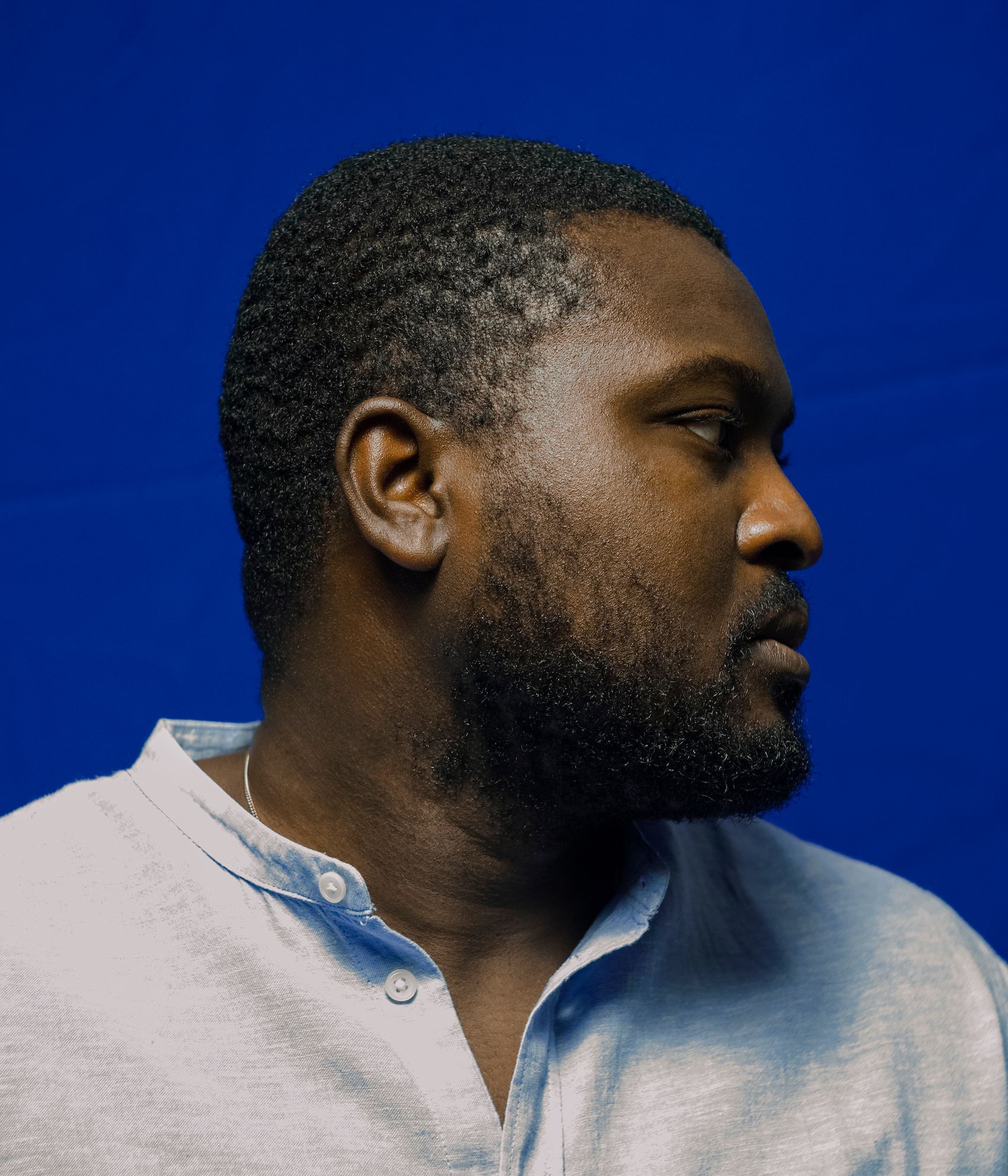
NIFEMI MARCUS-BELLO
Photo by Kadara Enyasi; Courtesy of the designer
Two decades later, Marcus-Bello's sense of self is still firmly grounded in—and expressed through—his design practice. Since formally opening his studio in 2017 in Lagos’ bustling Lekki neighborhood, the 30-something has quickly claimed a place at the forefront of West Africa’s rapidly growing, dynamic contemporary design scene—and, in parallel, turned heads on the international stage. His rising star is the result of an empathy-driven practice thatdraws on local culture, materials, and manufacturing expertise to create commercial and collectible design pieces that center and honor West African stories, past and present.
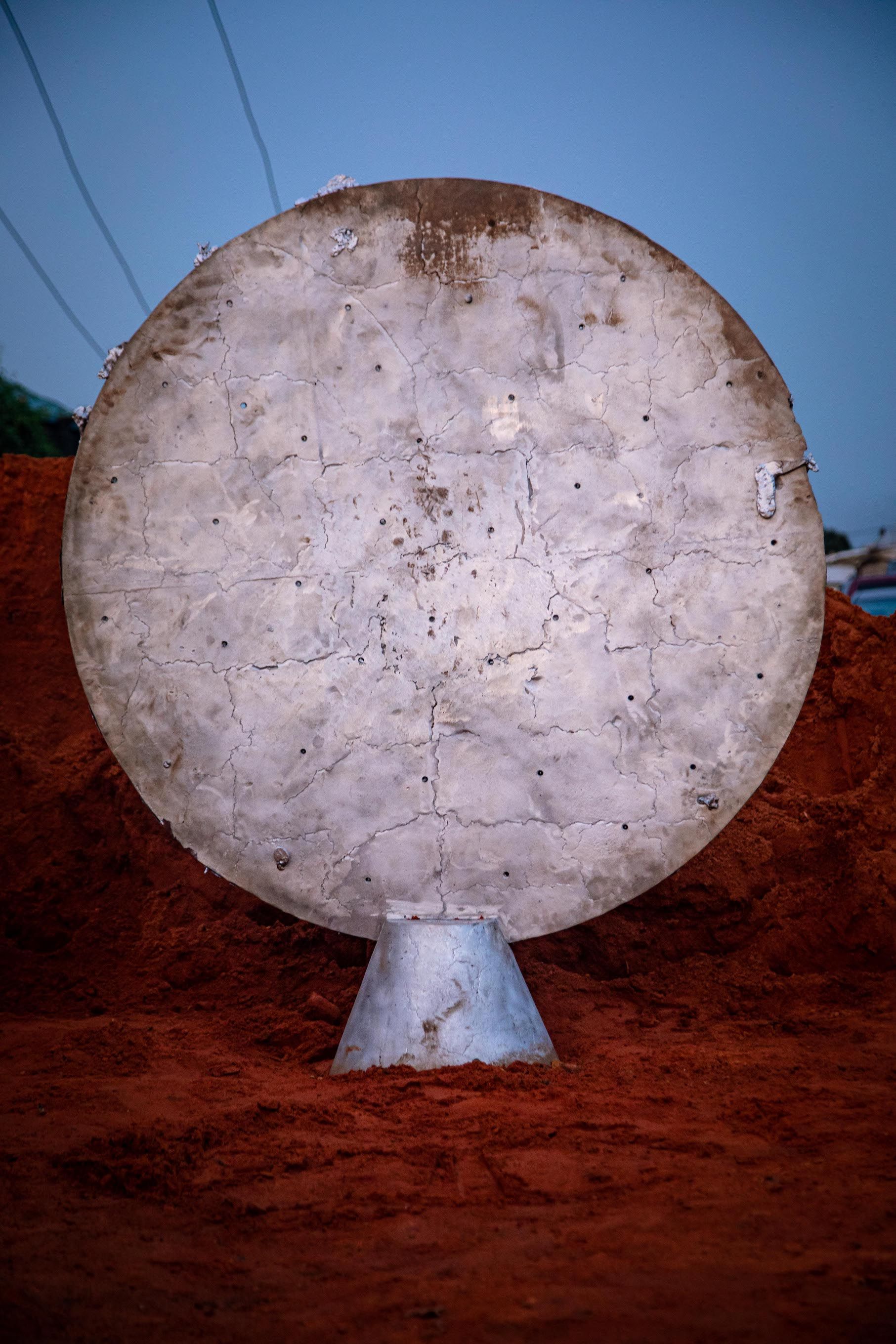

TALES BY MOONLIGHT BY NIFEMI MARCUS-BELLO, PREMIERING AT DESIGN MIAMI/ 2023
Photos by Jide Ayeni; Courtesy of Marta Los Angeles and the designer
“Africa is a designer's utopia, a playground if you will, and if anything was ever to be the lodestar in my practice, it would be that.”
—Nifemi Marcus-Bello
“For me, designing in Africa has always felt like a privilege; the fact that I get to go out and see what the constraints can birth in me is something I don’t take for granted. The fact that something I discovered as a child is my job today is a huge deal to me.Africa is a designer's utopia, a playground if you will, and if anything was ever to be the lodestar in my practice, it would be that.”
Marcus-Bello’s contextual approach manifests in an array of object typologies, produced in collaboration with diverse regional makers. Collectively, they offer up layered, intimate narratives that resonate on a global scale. Marcus-Bello’s work can be read as artifacts of this complex moment, taking on topics as rich and varied as family and cultural traditions, materiality and making legacies, and even far-reaching socio-economic and political challenges, all set against the backdrop of a rapidly growing continent. Speaking to the larger region’s design future, he observes: “There is a great deal of exciting output to come as globalization, urbanization, and internal migration dictates material availability in the region.”

TM BENCH BY NIFEMI MARCUS-BELLO, FROM THE TALES BY MOONLIGHT COLLECTION DEBUTING AT DESIGN MIAMI/
Photo by Jide Ayeni; Courtesy of Marta Los Angeles and the designer
Following his studies at University of Leeds in the UK, Marcus-Bello returned to Nigeria and worked for architect Kunlé Adeyemi and then MASS Design Group in Rwanda. In 2017, he returned to Lagos to set up his own shop, and soon realized he’d need to forge his own path. He recalls, “I returned with one question in my mind: Is design, as I studied it, possible in Lagos? The short answer, I found, is no, because England is a different terrain in terms of what is available [material and production-wise]. I remember researching manufacturing companies and going door to door to see what making in Lagos might look like. What already exists? Who are the stakeholders? How can I be a part of it all? A few opened their doors to me and let me study their processes. Taking what they made available to me, I headed back to my studio and started designing.”

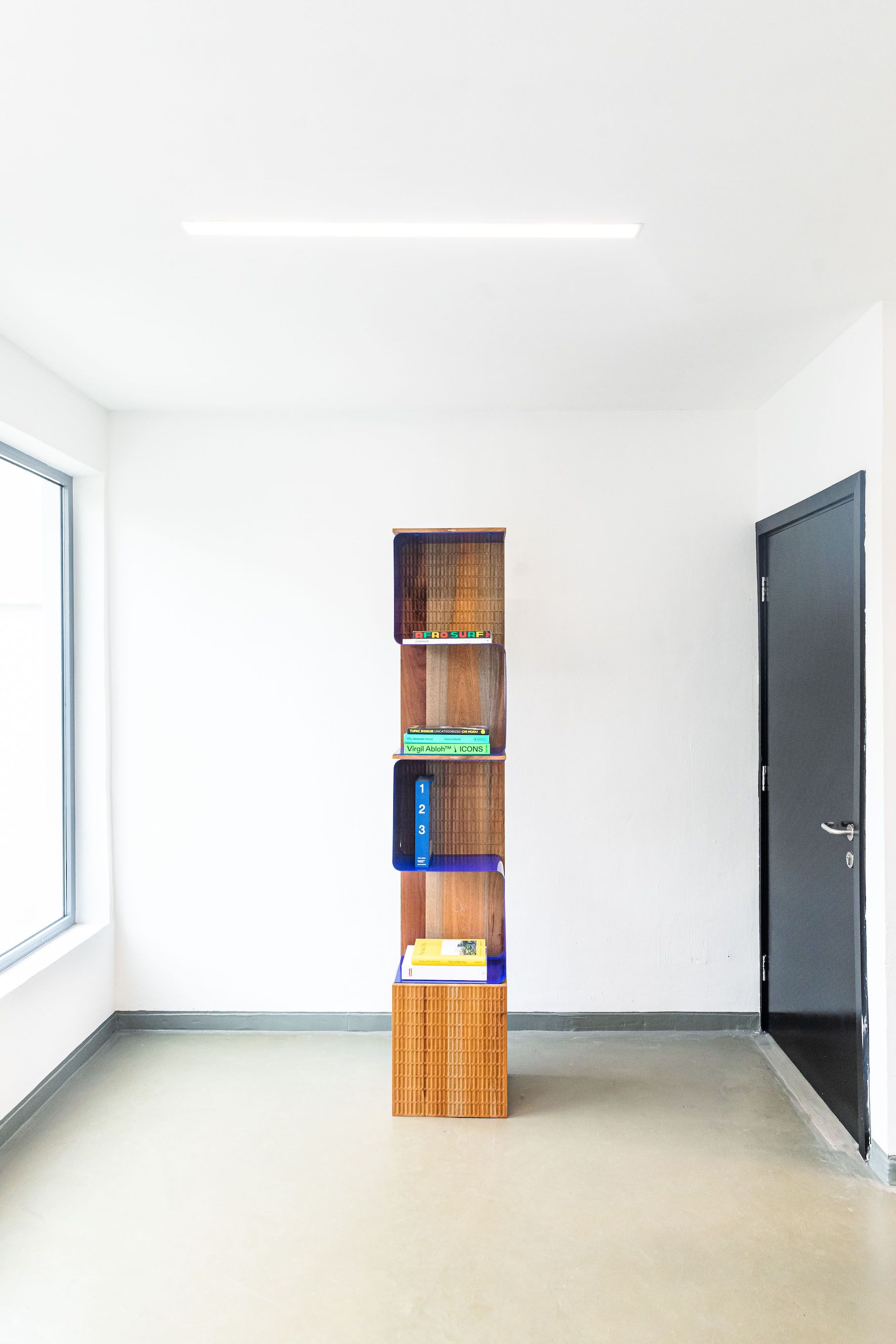
FROM LEFT: MARCUS-BELLO'S LM STOOL AND M2 SHELF
From left: Image by nmbelloStudio and Jide Ayeni; Courtesy of the designer
Recent works, such as the LM stool and For the Community by the Community, demonstrate Marcus-Bello’s ingenious improvisational skills in navigating local terrain. For the LM stool, Marcus-Bello adapted the existing production processes of a local factory using sheet metal to make power generator casings to create a boldly sculptural stool in the same material—an unexpected, contemporary design piece produced within the bounds of existing local systems. (The stool was subsequently acquired by London’s Design Museum.) Similarly, For the Community by the Community, his design for urgently needed portable handwashing stations in Nigeria during the pandemic, was made in collaboration with local artisans using readily available, modular materials—including, among other elements, the tubular steel used to make hospital beds—to support healthcare workers on the ground. (The project earned him the 2021 “Life-Enhancer of the Year” Wallpaper* Design Award.)

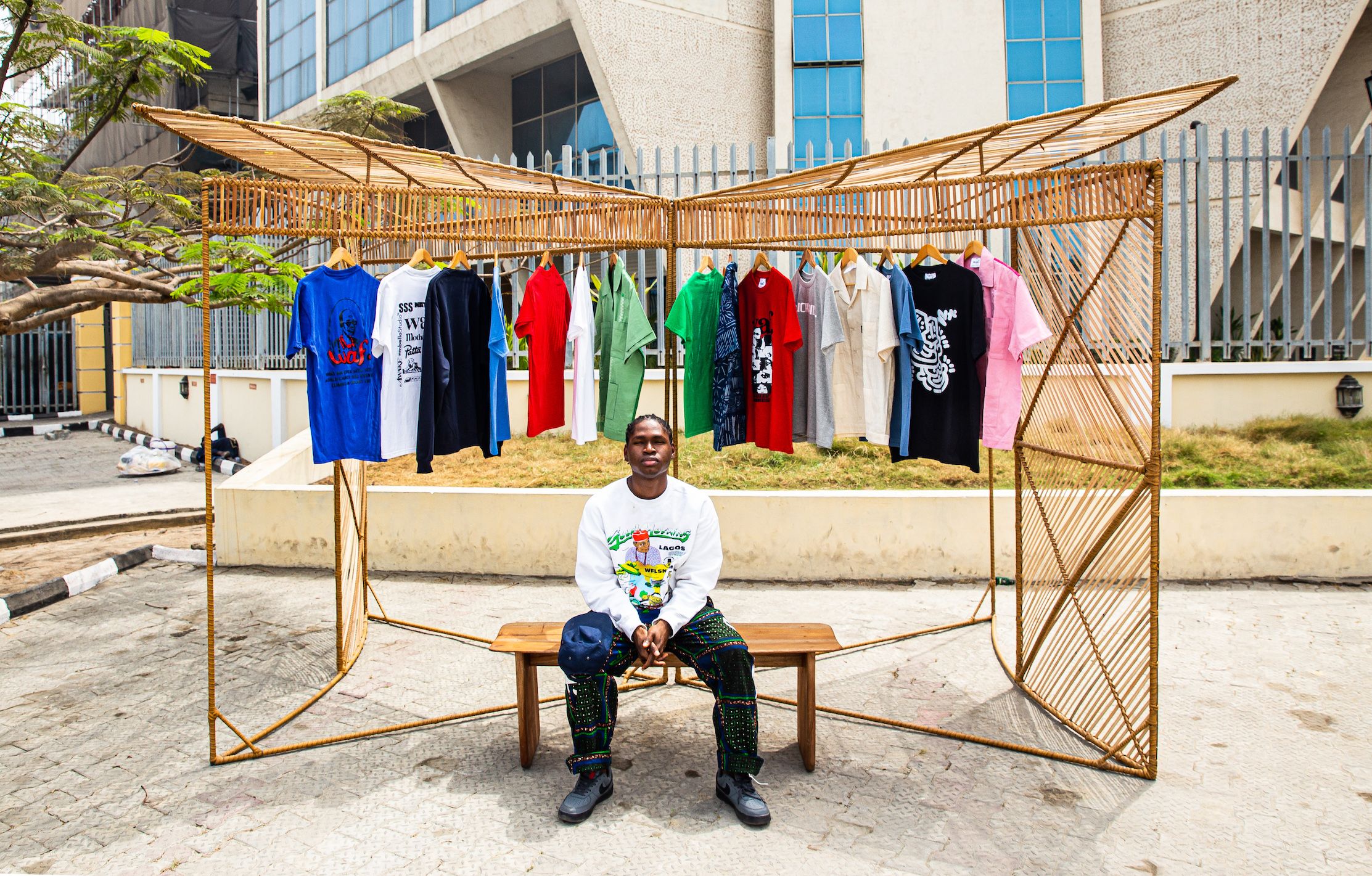
MARCUS-BELLO'S RECENT WAF KIOSK TOOK INSPIRATION FROM BOTH TRADITIONAL BENINESE BLINDS AND LAGOS’ SECOND-HAND CLOTHING VENDORS
Photos by Jide Ayeni; Courtesy of the designer
“Lagos has taught me the way to approach day-to-day and systematic constraints through the process of design and making,” he says. “Through it all I have learnt, grown, and evolved to become the designer that I always wanted to be. So it feels like I am in the right place at the right time.”
2023 is shaping up to be the designer’s biggest year yet. In January, Marcus-Bello opened his first US solo exhibition at the upstart gallery Marta Los Angeles. Entitled Oríkì (Act I):Friction Ridge,the show kicked off what will be a series of exhibitions born of his investigations into, as he says, “what defines contemporary West African Design today.” A layered reflection on family, heritage, and craft, the show debuted a series of benches created with Benin bronze artisans, literally marked by the unique fingerprints of both the designer and the craftsmen. They were produced utilizing the same techniques once used to create royal portraiture in the Benin Kingdom, much of which was looted during the 19th century. Prompted, in part, by the recent repatriation of a number of Benin bronzes from European institutions, Marcus-Bello crafted contemporary forms using the same rich, historic process. His aim was “to create objects that are not only functional, but spark an emotional connectivity… [which in turn] act as a dialogue between maker, designer, and community.” They were presented alongside an audio recording of the designer’s mother reciting a personalized, traditional praise poem for him in Yoruba—an affirmation known as oríkì—that “touch[es] on my lineage, what I am, and what I will become.”
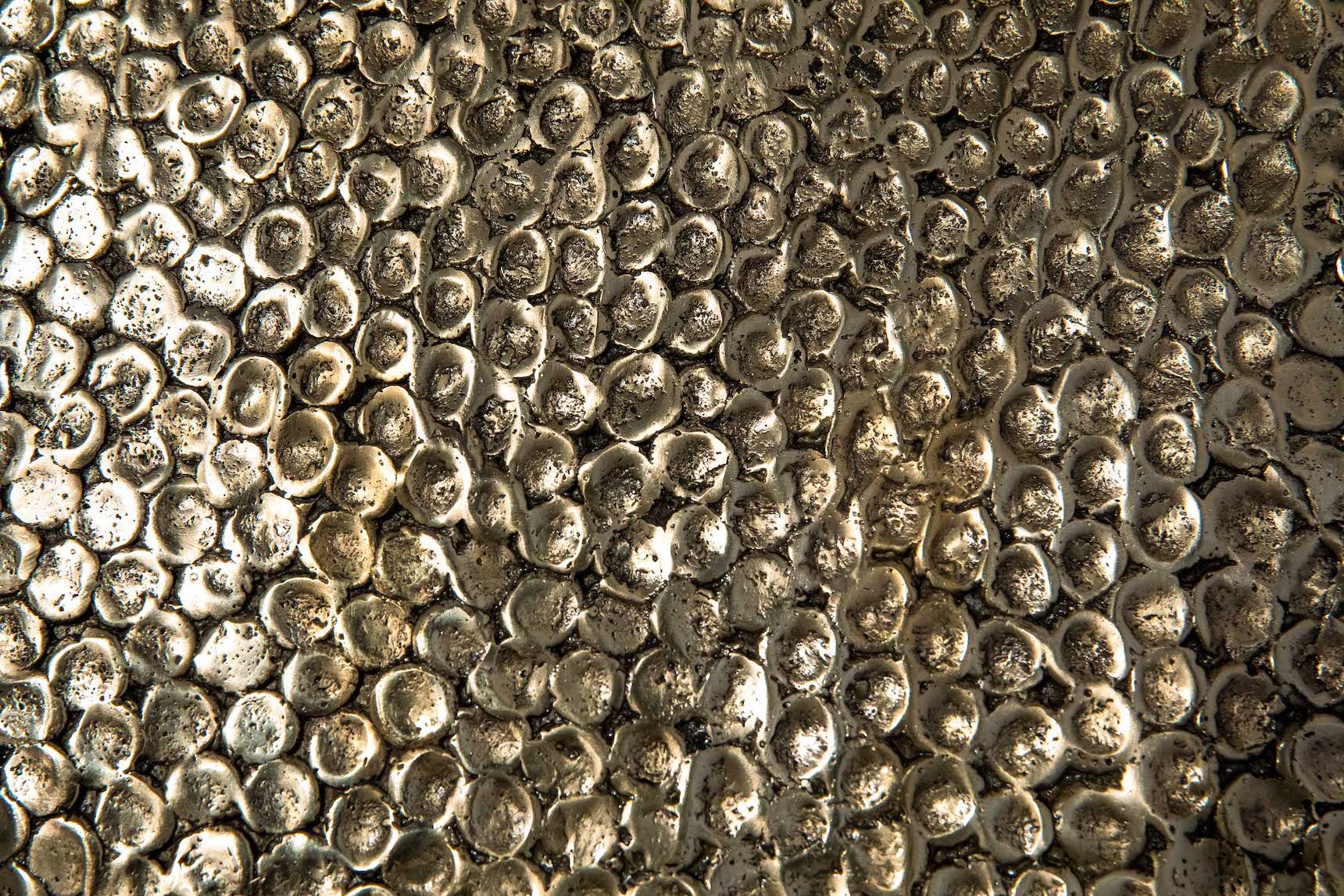


MARCUS-BELLO’S BRONZE FRICTION RIDGE SERIES, PRESENTED BY MARTA LOS ANGELES . THE WORKS WERE CREATED WITH BENIN BRONZE ARTISANS, AND LITERALLY MARKED BY THE UNIQUE FINGERPRINTS OF BOTH THE DESIGNER AND THE CRAFTSMEN.
Photos at left and bottom right by Jide Ayeni; Top right photo by Erik Benjamins
Marcus-Bello also recently outfitted the newly opened Mayfair location of Tiwani Contemporary, a gallery championing visual artists from Africa and the diaspora, with new bespoke furniture. His designs incorporate a simple, repetitive pattern—present across multiple pieces—inspired by markings used in traditional ceremonies on the African continent. And as of November, his ongoing research project—the aptly titled Africa: A Designer’s Utopia—is on view at the Sharjah Architecture Triennial. The project investigates anonymously designed, quotidian objects on the continent, chronicling everyday design dexterity by people across the continent—and exploring how those context driven vernacular solutions inspire contemporary practices like his own.
And this week, together with Marta, Marcus-Bello makes his Design Miami/ debut with not one but two new projects—works he describes as the most important in his practice to date—that deftly hold up a mirror (and in one case literally) to this complex moment in time. As he says, “This year has been one of dialogue and intentionality. I’m posing a lot of questions through my work.”
In direct response to the 2023 fair’s curatorial theme, Where We Stand, Marcus-Bello conceived a special piece entitled Omi Iyọ (salt water in Yoruba), which will be presented beside the fair’s curatorial statement. The work reflects on the human toll of the migration crisis—a globally resonant topic to be sure, in this case specifically focused on the experiences of those who make the dangerous journey across the Mediterranean from Africa to Europe. The mirror’s unexpected form simultaneously draws attention to this urgent humanitarian issue and encourages visitors to consider our own role in it by way of a reflective surface.
In parallel, he’ll present Oríkì (Act II): Tales by Moonlight, which takes as its starting point a kids’ TV show of the same name that aired in the ’80s and ’90s on Nigerian TV. In each episode, children sat beneath a tree to listen to a narrator distill folktales into uplifting messages. Marcus-Bello has created a gathering space inspired by the program, composed of sand cast metal furniture resulting from his investigation into Lagos’s thriving micro craft community—which has developed in direct response to the second hand product market in Africa, much of which comes from Europe and the US. The local craftsmen sand cast otherwise obsolete parts to affordably extend the life spans of appliances, vehicles, and more. For Marcus-Bello, this project was an opportunity to interrogate a range of issues, including globalization, sustainability, production chains, and supply-and-demand dynamics. To ask: “What is a material’s role in society? And who gets to decide?”
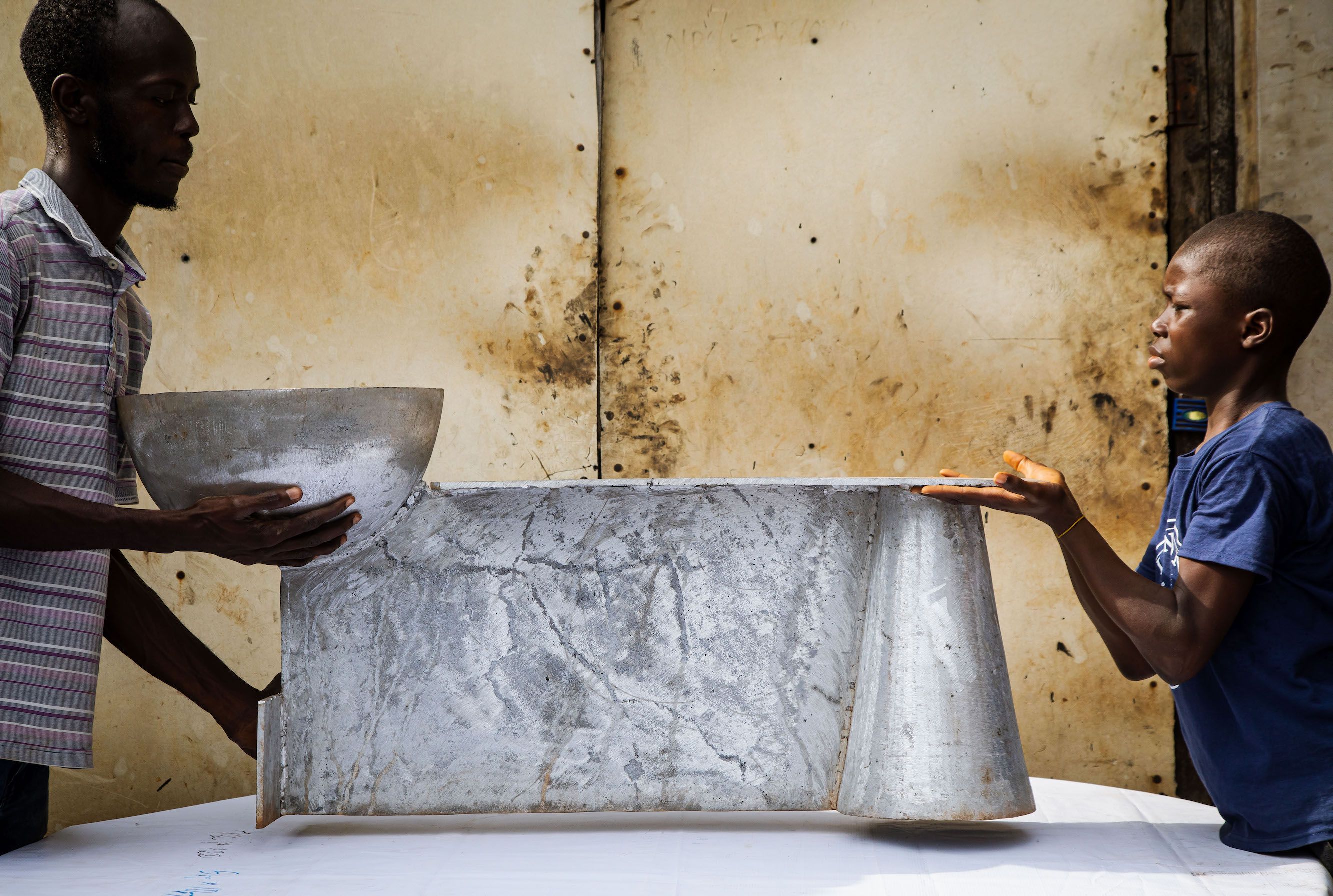
THE MAKING OF NIFEMI MARCUS-BELLO'S TALES BY MOONLIGHT
Photos by Jide Ayeni; Courtesy of Marta Los Angeles and the designer


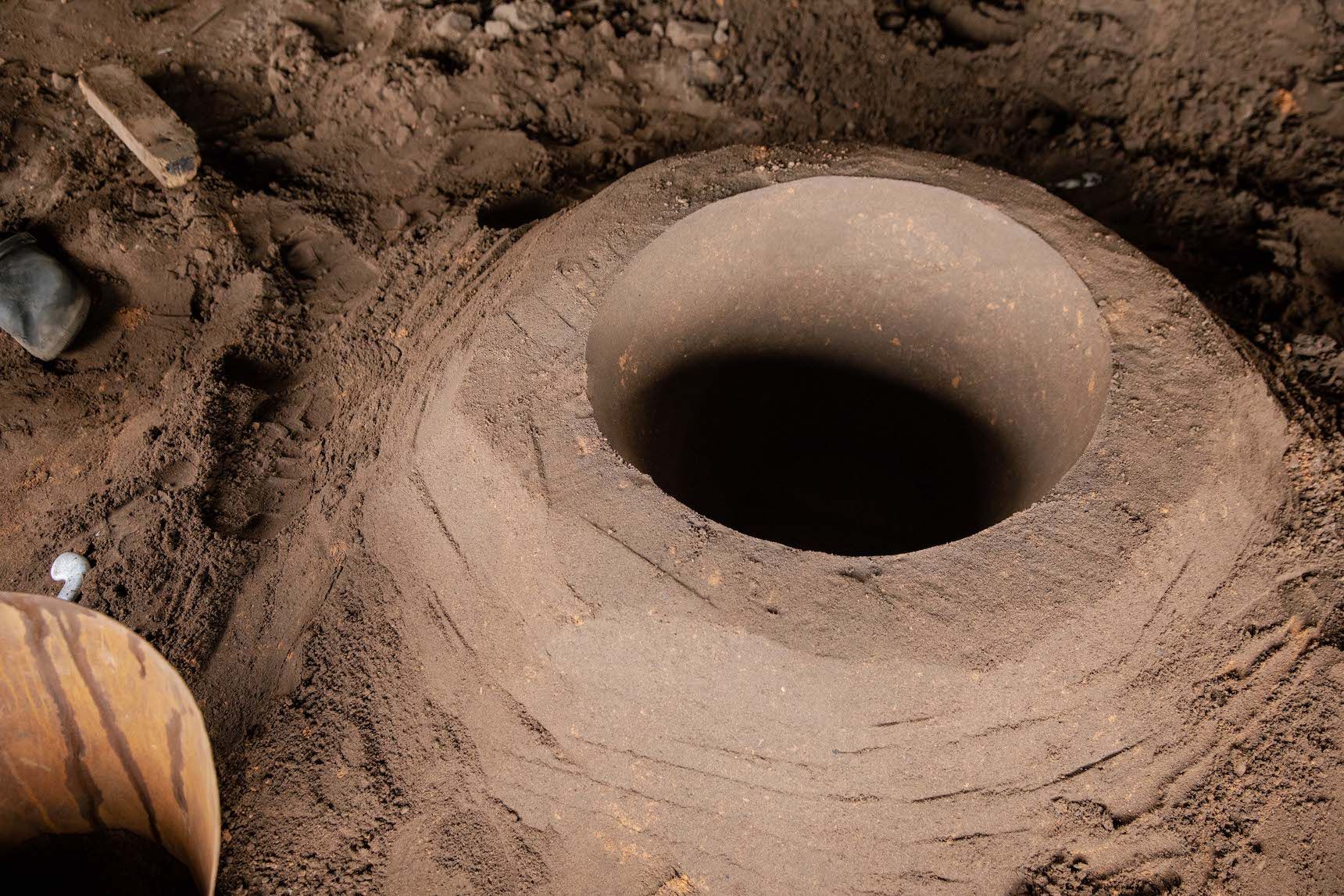
THE MAKING OF TALES BY MOONLIGHT IN NIGERIA BY NIFEMI MARCUS-BELLO
Photos by Jide Ayeni; Courtesy of Marta Los Angeles and the designer
“Both of these projects investigate design’s potential to create emotional connection, be it through form, material, presentation, or nostalgia,” Marcus-Bello explains. And each demonstrates the designer’s striking ability to spark dialogue around complex subjects through objects centering local, human-centric stories. In so doing, he elegantly navigates the often polarized nature of our day by creating work that quietly, yet powerfully reverberates across geographical borders, opening up space for contemplation—and, he hopes, even points of connection.
As he explains: “All objects eventually become archives, and through them we can understand what was taking place and why things were being made at a certain time and place. With the work I am currently doing, I am hoping that these objects don't just act as a time capsule, but as mediums to speak—and encourage conversation around—on what is, what will be, and what will hopefully happen.”
A version of this story first appeared in Design District Magazine. Marcus-Bello makes his Design Miami/ debut this week with two installations presented by Marta Los Angeles.

